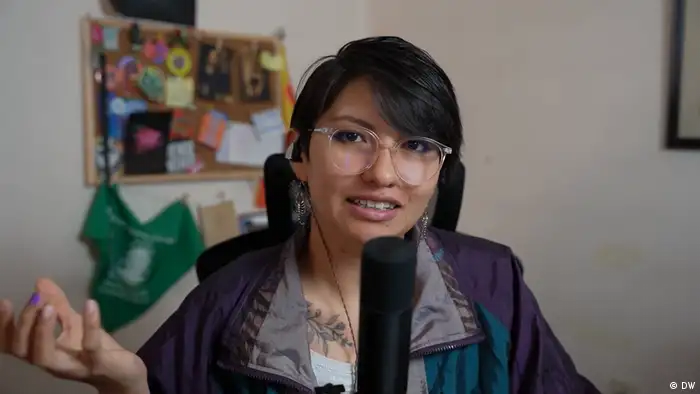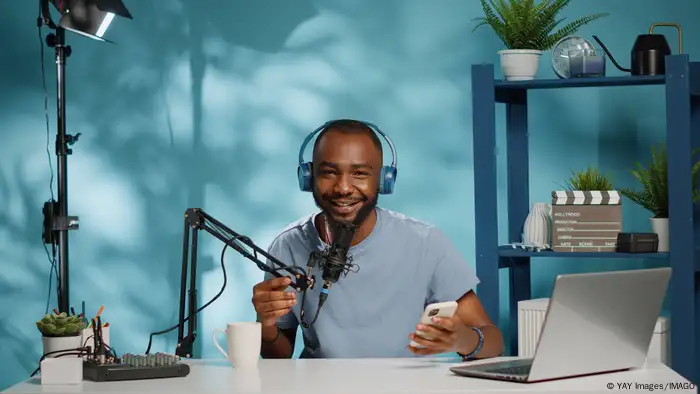Podcasting
Lights, camera, action? The pros and cons of adding a video component to your podcast
Video podcasts have been gaining in popularity lately, despite the reservations of audio purists. There are real benefits to adding images, but producers taking the video plunge need to know all that’s involved.
They say a picture is worth a thousand words. Does that apply in the podcasting space?
That might depend on your age, your media history and even how you best absorb information – through your ears or through your eyes. But the question of adding a video component to podcasts has proven divisive. One camp sees it as as staying in sync with the times, creating media that appeals to generations raised on YouTube and TikTok. Others see it as an essential misunderstanding of the medium.
Many veteran podcasters and those with a background in radio fall into the second camp, insisting that podcasts are best consumed by the ears only. Audio, they feel, allows an intimacy that’s hard to replicate when images are involved. There’s something about the voices in your ear and the images created in the mind while listening that results in a rich media experience unlike any other.
But despite the misgivings, video is making definite inroads into the podcasting sphere. The New York Times recently analyzed data published by Edison Research on US podcast trends. It found that 16 of the top 30 podcasts in the final quarter of 2023 were available as videos. That’s a strong uptick from the same period two years earlier when just seven of the top 30 had a video component.
Given the trend, should you comb your hair, put on a decent shirt and point a camera at you and your guests while you record? Or if you’re still in the planning phases, should you already factor in video from the start? Let’s look at the pros and cons of adding video to your podcast.
PROS – Video has some real upsides
1. Bigger Audience Reach: Video gives you the potential to reach a broader audience. Video podcasts appeal to visual learners and those who like a side of engaging images with their audio buffet. This especially applies to younger audiences raised on social media platforms like Instagram, YouTube and Tiktok. Plus, YouTube is a global giant, everyone knows it, and it has begun pushing podcasts strongly with its YouTube Music offering. Since so many people are already on YouTube, putting your podcast there could mean you potentially reach millions who already use the platform a lot but don’t know that much about podcasts yet.
2. Better Engagement: Some argue that engagement rates are higher with video because people can see their favorite hosts and get more information from interviews and conversations through facial expressions, body language, graphics, etc. YouTube’s comment section makes it easy to engage directly with a podcast and for the creator to respond, which is not the case with most audio platforms. Better engagement leads to more loyalty, which leads to improved sustainability.
3. Monetization: Marketers like video because platforms like YouTube provide easy monetization options. Video podcasts on YouTube usually get more views than podcasts on audio platforms. That makes the shows much more interesting to potential advertisers and sponsors.
4. Repurposing: Video allows producers to feature their content across multiple platforms. Video clips can be shared on social media channels, embedded in blog posts or repackaged for Instagram and TikTok. This boosts visibility and lets podcasters expand their reach, especially with audiences who might not normally consume audio content.

DW Akademie’s "Survive and Thrive: The Media Viability Podcast," here with Michelle Nogales, CEO of Muy Waso, is also available as videos on YouTube
CONS – Adding video isn’t exactly a cakewalk.
1. Production Complexity: Video podcasts involve more expertise and equipment than audio-only productions. Producers need cameras, a lighting setup, video editing software and post-production workflows. Video can be daunting for podcasters with limited experience or resources.
2. Cost: Audio podcasts are relatively cheap to produce -- a microphone or two and a laptop is pretty much all you need. But the additional production needs for video add significant expense. Quality cameras/phones, mics, lighting and stands are all necessary for video, and all that can run from 700 euros – 5,000 euros. You also have to consider renting a studio space or investing in a home studio space (for furniture, backdrops, etc.). Editing software like Adobe Premier or Final Cut Pro runs from 20 euros to 60 euros a month. Some of these expenses can be lowered if you find used equipment and good deals, but there’s no doubt that video is more expensive than audio only.
3. Time Demands: Video takes more time than audio-only production given the additional steps of filming and post-production. This increased commitment can be tough for podcasters who are already pressed for time and might have other jobs.
4. Pressure and Scrutiny: Video adds a new layer of scrutiny for both hosts and guests since you’re being seen instead of just heard. Some guests might not want to show themselves on camera. Video can lead to self-consciousness – all that pressure to look good for the camera – and even stifle creativity and authenticity.
5. Distraction from content: Video can lead creators to focus on the quality of their images instead of on the quality of their content. Ideally, the pictures should complement the main messages of the show, not BE the main message.
Take the video plunge?
Whether you go the video route or stick with audio-only content depends on your budget, your goals and your audience.
One school of thought is that video can certainly be an add-on, but that it’s important for podcasters to focus initially on building a solid foundation of good content and consistency with their show. That’s easier and cheaper to do with audio. Once that’s accomplished, and if you think that video can add a new dimension to your show or reach new audiences, start experimenting and see if you and your show are truly camera-ready.
Another strategy audio enthusiasts might thank you for if you do turn on the cameras is to make sure you’re creating an “eyes-optional experience”, where your podcast works both with the visuals and in audio-only form. That way people looking at a screen can get the extra info – faces, expressions, etc. – that video provides, but those just listening while driving in the car, washing dishes or out on a walk can enjoy the episode as well.
DW recommends
- Date 30.04.2024
- Author Kyle James
- Feedback: Send us your feedback.
- Print Print this page
- Permalink https://p.dw.com/p/4fM0e
- Date 30.04.2024
- Author Kyle James
- Send us your feedback.
- Print Print this page
- Permalink https://p.dw.com/p/4fM0e

